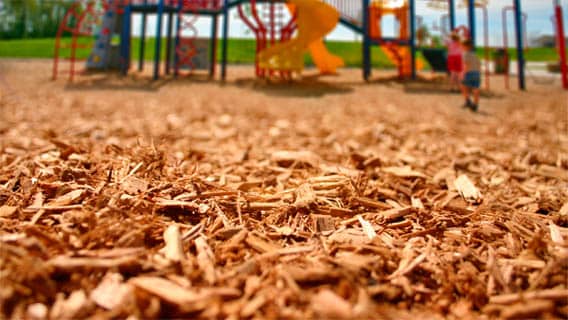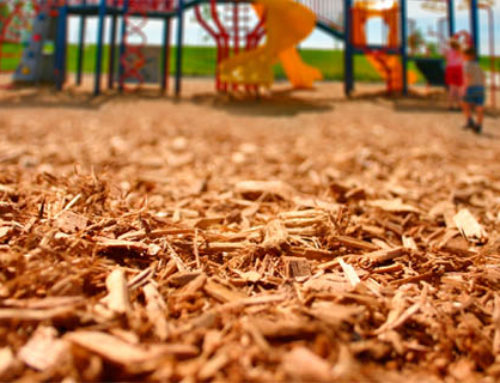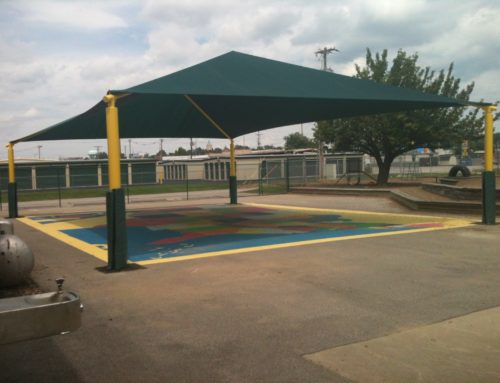Safety surfacingis a cushion that can absorb some of the impact of falls. While grass may be considered soft and comfortable, the dirt just beneath grass is actually quite hard and potentially dangerous. In its place, safety experts recommend surfaces with “give”—most commonly, engineered wood fiber, sand, artificial turf, rubber multch or rubber matting. At proper depths, safety materials lessen the chances of life-threatening (mainly head) injuries at your playground.
It’s important to note that no surface can guarantee safety, especially against orthopedic injuries like broken wrists and ankles. In many cases, these injuries result more from awkward falls than from falls of great height or speed. Government and industry safety standards instead concentrate on the likelihood of life-threatening injuries and measure things like g-forces (acceleration due to gravity) and HIC (head injury criteria) to recommend minimum depth of safety surfacing for particular playgrounds. Safety recommendations are generally based on the maximum height of your playstructure, as the distance a child falls is the most important factor in the g-force and HIC measurements.
To provide the safest playground surfaces, use materials that are shock-absorbing and are regularly inspected and maintained. Loose fill materials such as shredded rubber, sand, or wood fiber or chips are some of the safest. Playground surfaces made with recycled rubber and PVC materials, such as shredded tires, provide suitable cushioning and are also considered environmentally friendly.
Other playground surfaces that absorb-shock and therefore rank as acceptable include rubber mats or fine or medium gravel of suitable depth. Playground surfaces that are not recommended include concrete, asphalt, grass or soil. The problem with grass or soil lies in the fact that over time it becomes hard and packed. A great alternative to grass is artificial turf. If the turf is installed over a suitable cushioning layer. it can be a great look for a playground.
Loose fill materials must be maintained at a sufficient depth and should not be installed over any hard surface, such as asphalt or concrete. The depth varies according to the material and to the height of the equipment. One advantage of a loose fill playground surface is that it relatively inexpensive and easy to find.
Most loose fill materials, however, tend to become compressed over time. Also, it is not easy to spot dangerous materials such as glass or nails in these types of playground surfaces. The surfaces require frequent maintenance and replacement, except in the case of recycled rubber mulch. Pea gravel and sand are also acceptable loose fill materials.
There is no single best surface for your playground. Factors like weather, the availability of maintenance staff, and even budgets play a role in that decision. Your local playground representative can certainly guide you carefully through the process, and the U.S. Consumer Product Safety Commission also has information on its site.
In choosing appropriate protective surfaces, you should take a look at the long-term issues involved and not make decisions on today’s costs alone. Original costs must be weighed against the life-cycle maintenance costs of the different surface materials available. Factors to include: resiliency, wheelchair accessibility and heat absorbency and radiation here in Arizona.
While playgrounds offer hundreds of options (slides, swings, ladders, colors), playground surfacing is much more basic, and perhaps much more important. Always check with a Certified Playground Safety Inspector when making these choices for you playground. The right or wrong choice could make a big difference for the welfare of you children!



